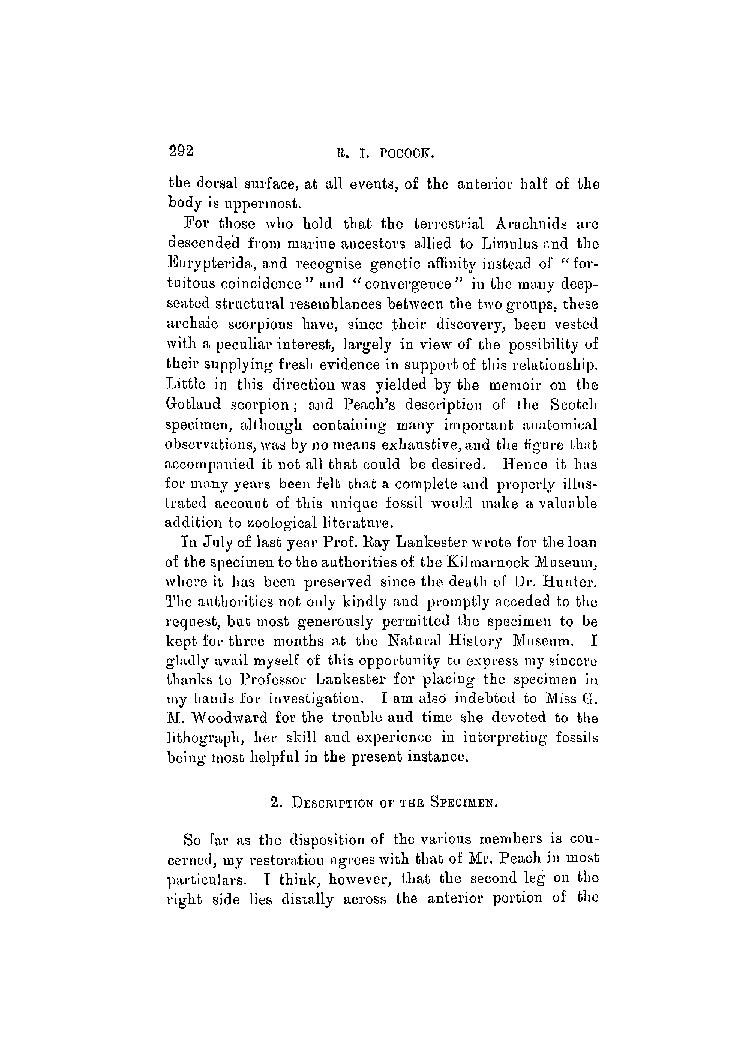the dorsal surface, at all events, of the anterior half of the body is uppermost.
For those who hold that the terrestrial Arachnids are descended from marine ancestors allied to Limulus and the Eurypterida, and recognise genetic affinity instead of "fortuitous coincidence" and "convergence" in the many deep-seated structural resemblances between the two groups, these archaic scorpions have, since their discovery, been vested with a peculiar interest, largely in view of the possibility of their supplying fresh evidence in support of this relationship. Little in this direction was yielded by the memoir on the Gotland scorpion; and Peach's description of the Scotch specimen, although containing many important anatomical observations, was by no means exhaustive, and the figure that accompanied it not all that could be desired. Hence it has for many years been felt that a complete and properly illustrated account of this unique fossil would make a valuable addition to zoological literature.
In July of last year Prof. Ray Lankester wrote for the loan of the specimen to the authorities of the Kilmarnock Museum, where it has been preserved since the death of Dr. Hunter. The authorities not only kindly and promptly acceded to the request, but most generously permitted the specimen to be kept for three months at the Natural History Museum. I gladly avail myself of this opportunity to express my sincere thanks to Professor Lankester for placing the specimen in my hands for investigation. I am also indebted to Miss G. M. Woodward for the trouble and time she devoted to the lithograph, her skill and experience in interpreting fossils being most helpful in the present instance.
2. Description of the Specimen.
So far as the disposition of the various members is concerned, my restoration agrees with that of Mr. Peach in most particulars. I think, however, that the second leg on the right side lies distally across the anterior portion of the
